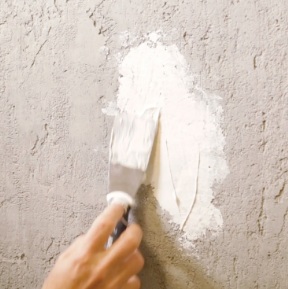Stucco Repair – Do’s and Don’ts When Repairing Stucco Floors

 Stucco can be used for many different types of projects. From repairing a sidewalk crack or driveway to protecting new buildings and retaining walls, stucco offers versatility in application. Here are some tips on how to use Stucco Repair Tampa properly.
Stucco can be used for many different types of projects. From repairing a sidewalk crack or driveway to protecting new buildings and retaining walls, stucco offers versatility in application. Here are some tips on how to use Stucco Repair Tampa properly.
Step One: If the damage is minimal and only a few portions of the repaired area require attention, clean up the mess with a garden hose and a mild detergent. Then, if necessary, use a utility knife to cut away excess stucco. QUIKrete pre-mixed stucco repair is best used where the damage is confined. Cut the entire crack to a minimum of a quarter-inch with a chisel and high-powered hammer (the ends of the crack should also be smooth or beveled). Remove loose or deteriorating concrete with a scrub brush and add an additional top coating to improve water resistance.
Step Two: In most cases, a portland cement and stucco repair will not require the use of replacement windows, siding, or gutters. The only option may be adding plastic sheets over the cracks to help prevent leaks. After applying the plastic, fill in between with Portland cement to firm up the surface. Sand the portland cement between coats to give it a smooth and even texture.
Step Three: After applying the cement, a layer of liquid mortar will be needed to complete the stucco repair. This layer is easily available at home supply stores and will need to be mixed with water. Do not mix them with regular water as this will cause the cement to become too hard. Mix a small amount of Portland cement with enough water to completely form a paste. Use a forward-thinking homeowner by mixing in some small pieces of stained glass or other decorative items to give your project an artistic touch.
Step Four: The final step in Portland Cement Stucco Remediation involves applying a final protective coating. This can be a do-it-yourself project if you have a few buckets of paint, but for an average homeowner it would be best to hire a professional. When applying the first layer, make sure that it is the same thickness all the way around. Apply the second coat in the same manner but only to the outside. For a third coat, allow the material to dry thoroughly before replacing any of the smaller cracks.
While the job is in progress, be cautious of heavy objects and furniture resting on your wall. These can cause cracks in the stucco repair. If heavy objects are resting, then place large pieces on the opposite sides of the doors to prevent them from causing further damage. Keep in mind that you should also clean the walls between the cracks, because the small gaps present can let in moisture if not treated promptly.
Stucco is made of fiberglass that has a tough physical exterior. However, like other forms of fiberglass, it can be damaged by rain, heat, and moisture if the outer coating begins to chip. This can allow water into the home, causing further damage and rot if it is not repaired immediately. For an exterior repair that can last for decades, a full replacement is recommended.
Although the stucco may look relatively unnoticeable to the naked eye, there are actually layers underneath that deal with wear and tear much better. These include metal lath and brick chips, which will both slowly deteriorate the surface of your home if they are not repaired in time. A repair may only last for years if it is performed properly and periodically cleaned and protected.

